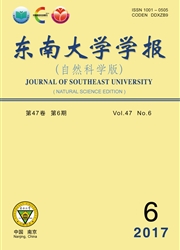

 中文摘要:
中文摘要:
针对封闭矩形空间,建立了基于小波迦辽金法的结构-声耦合计算模型.采用正交试验设计方法研究了次级声源位置和复强度2个因素的交互作用对有源噪声控制系统的降噪量的影响.虽然此交互作用均被以往文献所忽略,但研究表明该交互作用对于系统降噪量的影响比较显著.在此基础上,分别采用遗传算法和基于均匀设计的模式搜索方法,优化次级声源的位置和复强度.通过比较发现,考虑交互作用的优化结果较忽略交互作用的优化结果性能提高约30%,并且基于均匀设计的模式搜索算法的搜索效率虽然高于遗传算法,但容易陷入局部最优.
 英文摘要:
英文摘要:
A vibro-acoustics model for a rectangular enclosure is built based on the wavelet-galerkin method. The significant effect on the reduction of total acoustic potential energy which is from the interaction of the location and complex strength of the second source is then proved by the orthogonal experiment design method. However this interaction was neglected by many references previously. Then the genetic algorithm and the Hooke-Jeeves algorithm based on the uniform design are applied to optimize the location and the complex strength of the second source. The results show that the reduction performance considering the interaction effect is 30% higher than that neglecting the interaction effect. It is also found that the speed of convergence of the Hooke-Jeeves algorithm is much higher than that of the genetic algorithm, but it is easy to fall into a local optimum.
 同期刊论文项目
同期刊论文项目
 同项目期刊论文
同项目期刊论文
 期刊信息
期刊信息
